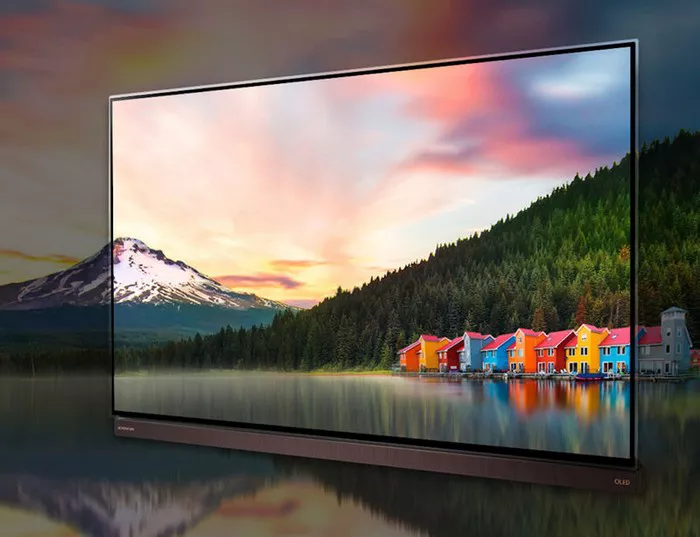In the realm of modern entertainment technology, the term “UHD” frequently surfaces when discussing the capabilities of smart TVs. As consumers explore the vast array of options available in the market, understanding what UHD entails becomes paramount in making informed purchasing decisions. This article aims to delve into the intricacies of UHD on smart TVs, elucidating its significance, technical specifications, and the implications it holds for the viewing experience.
What is UHD?
UHD, or Ultra High Definition, represents the pinnacle of visual resolution in the realm of consumer electronics. It refers to a display resolution significantly higher than that of standard high definition (HD) or full high definition (FHD). While there’s often confusion between terms like UHD, 4K, and 8K, they all fall under the umbrella of high-resolution formats, with UHD specifically encompassing both 4K and 8K resolutions.
Resolution Breakdown: 4K and 8K
The term “4K” denotes a resolution of approximately 3840 x 2160 pixels, resulting in over 8 million pixels on the screen. This resolution delivers unparalleled clarity, sharpness, and detail, rendering images with stunning realism. On the other hand, “8K” boasts a resolution of 7680 x 4320 pixels, effectively quadrupling the number of pixels compared to 4K displays. The sheer density of pixels in 8K resolution results in an incredibly immersive viewing experience, ideal for large screens or close viewing distances.
Enhanced Visual Experience
The primary allure of UHD on smart TVs lies in its ability to elevate the viewing experience to unprecedented levels of immersion and realism. With UHD resolution, viewers can discern finer details, textures, and nuances in their favorite content, whether it’s movies, TV shows, or video games. This enhanced visual fidelity creates a more captivating and engaging experience, pulling viewers deeper into the world unfolding on the screen.
Technological Advancements Driving UHD
Several technological advancements have paved the way for the widespread adoption of UHD on smart TVs. Chief among these is the evolution of display panel technology, with manufacturers continuously pushing the boundaries of resolution, contrast, and color reproduction. Additionally, improvements in video compression techniques, such as High Efficiency Video Coding (HEVC), enable the efficient delivery of UHD content over various streaming platforms and broadcast channels.
HDR: Enhancing Contrast and Color
In conjunction with UHD resolution, High Dynamic Range (HDR) technology further enhances the visual experience on smart TVs. HDR expands the range of both contrast and color, resulting in deeper blacks, brighter whites, and a broader spectrum of colors. This heightened dynamic range imbues scenes with greater realism and depth, allowing viewers to appreciate the full gamut of light and color as intended by content creators.
Compatibility and Content Availability
As UHD technology continues to proliferate, ensuring compatibility and access to UHD content becomes increasingly vital. Fortunately, major streaming services, such as Netflix, Amazon Prime Video, and Disney+, offer a growing selection of movies and TV shows in UHD resolution. Additionally, Blu-ray discs and gaming consoles support UHD playback, providing alternative avenues for accessing high-resolution content.
Bandwidth and Connectivity Considerations
One of the challenges associated with UHD content consumption is the substantial increase in bandwidth requirements. Streaming UHD videos demands a robust internet connection with sufficient bandwidth to handle the data-intensive nature of high-resolution content. Moreover, smart TVs must feature advanced connectivity options, such as HDMI 2.1 ports, to accommodate the high data throughput necessary for delivering UHD content without compromise.
Gaming in UHD: The Next Frontier
Beyond traditional media consumption, UHD opens up exciting possibilities for gaming enthusiasts. The combination of UHD resolution and HDR technology results in breathtakingly immersive gaming experiences, with games boasting lifelike visuals and vibrant colors. Console manufacturers like Sony and Microsoft have embraced UHD gaming, offering consoles capable of rendering games in stunning 4K resolution at high frame rates.
Future Prospects: The Rise of 8K
While 4K UHD has become increasingly prevalent, the industry is already looking towards the next frontier: 8K resolution. Although 8K displays remain relatively niche due to their high cost and limited content availability, advancements in display technology and content production are steadily driving adoption. As prices gradually decline and content libraries expand, 8K UHD is poised to become the new standard for premium viewing experiences.
Conclusion
In summary, UHD represents a transformative leap in visual technology, offering unparalleled clarity, realism, and immersion on smart TVs. With resolutions reaching 4K and beyond, coupled with advancements in HDR and connectivity, UHD elevates the viewing experience to unprecedented heights. As consumers embrace UHD-enabled smart TVs, they gain access to a vast ecosystem of high-resolution content, from streaming services to gaming platforms, enriching their entertainment pursuits in ways previously unimaginable. As the industry continues to innovate and evolve, UHD remains at the forefront of the quest for ultimate visual fidelity and immersion in the digital age.


























